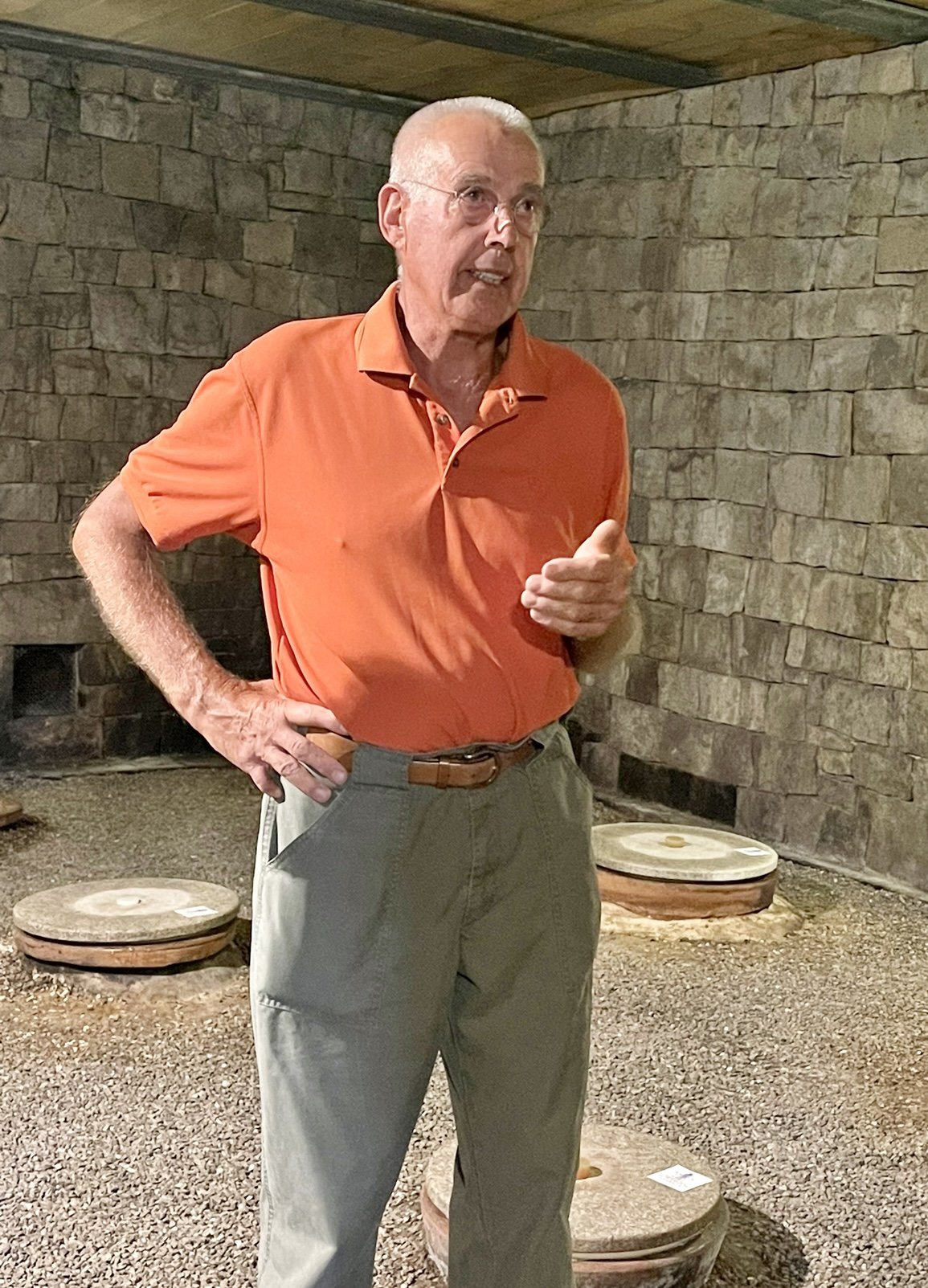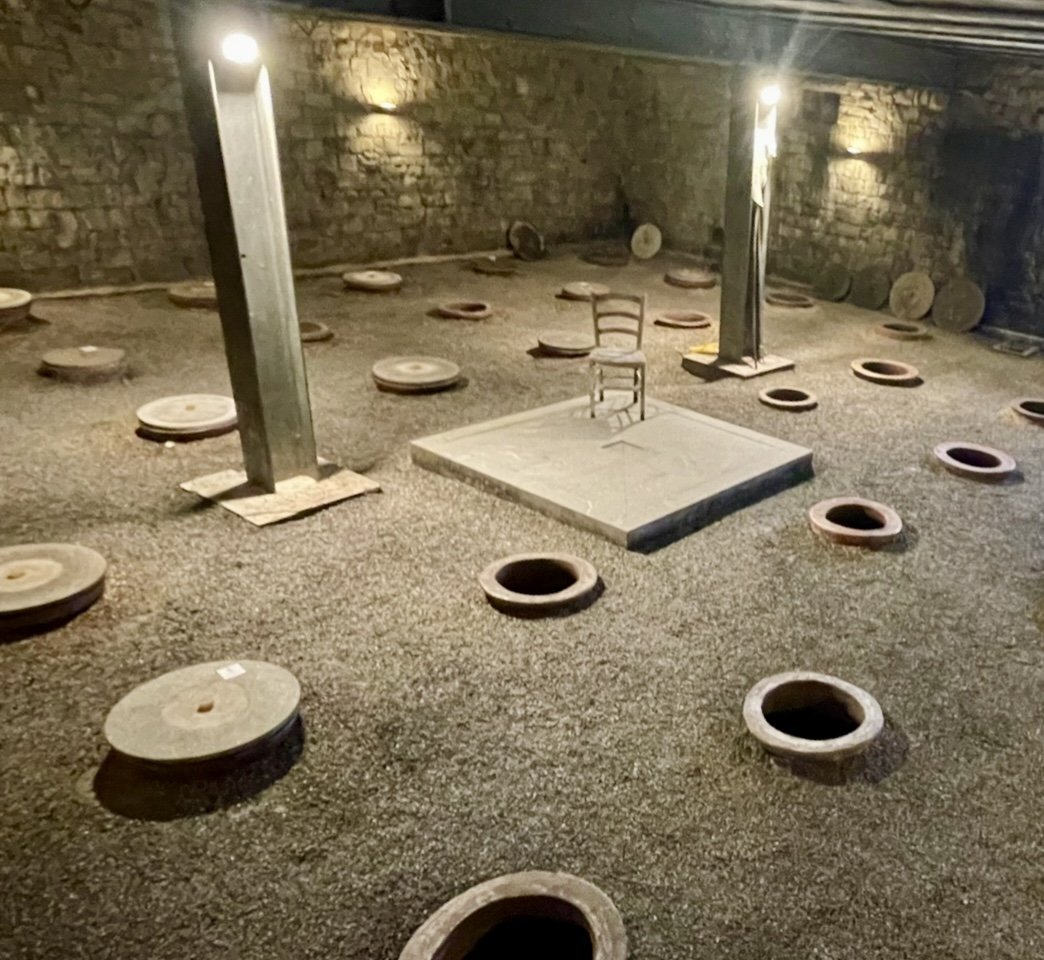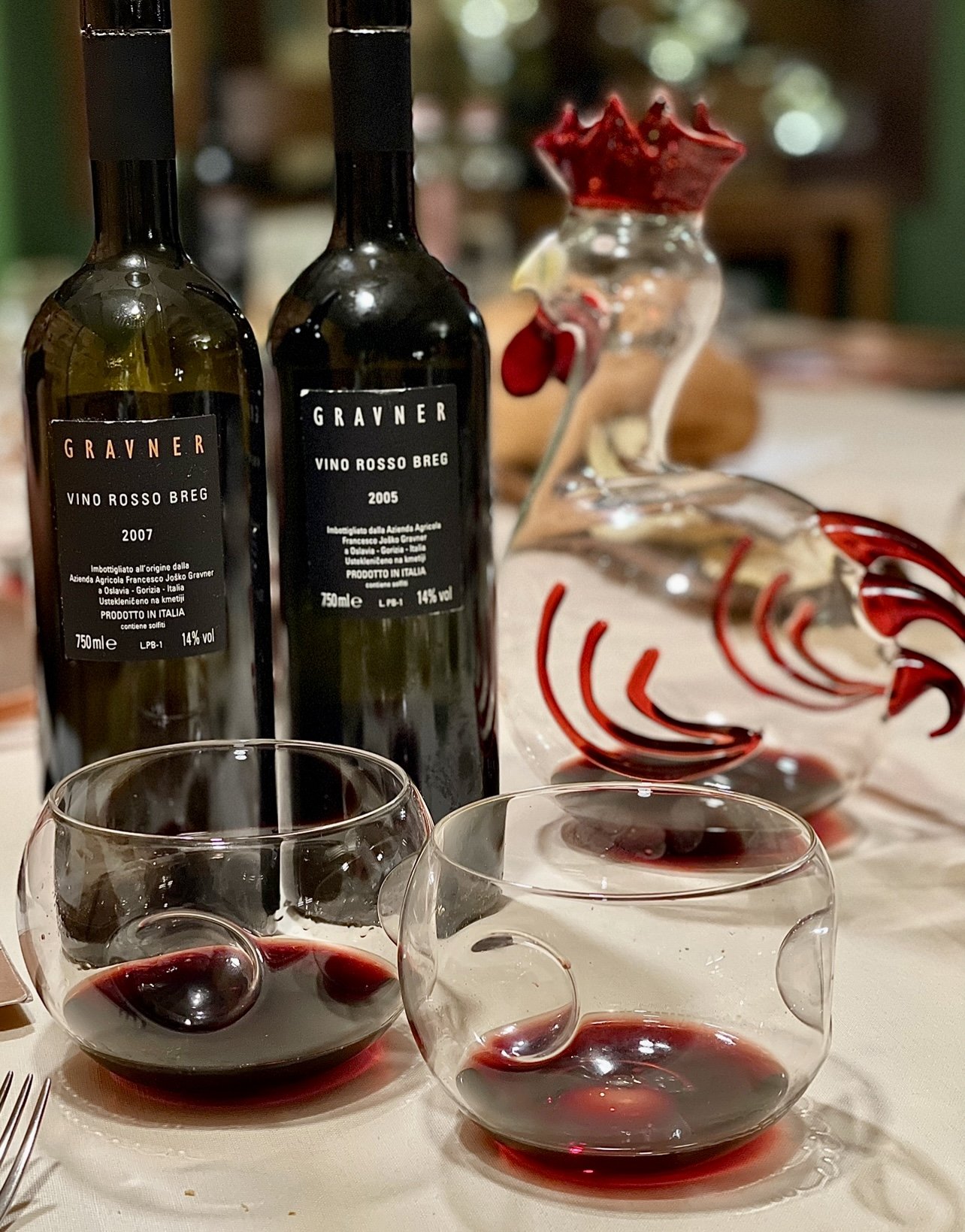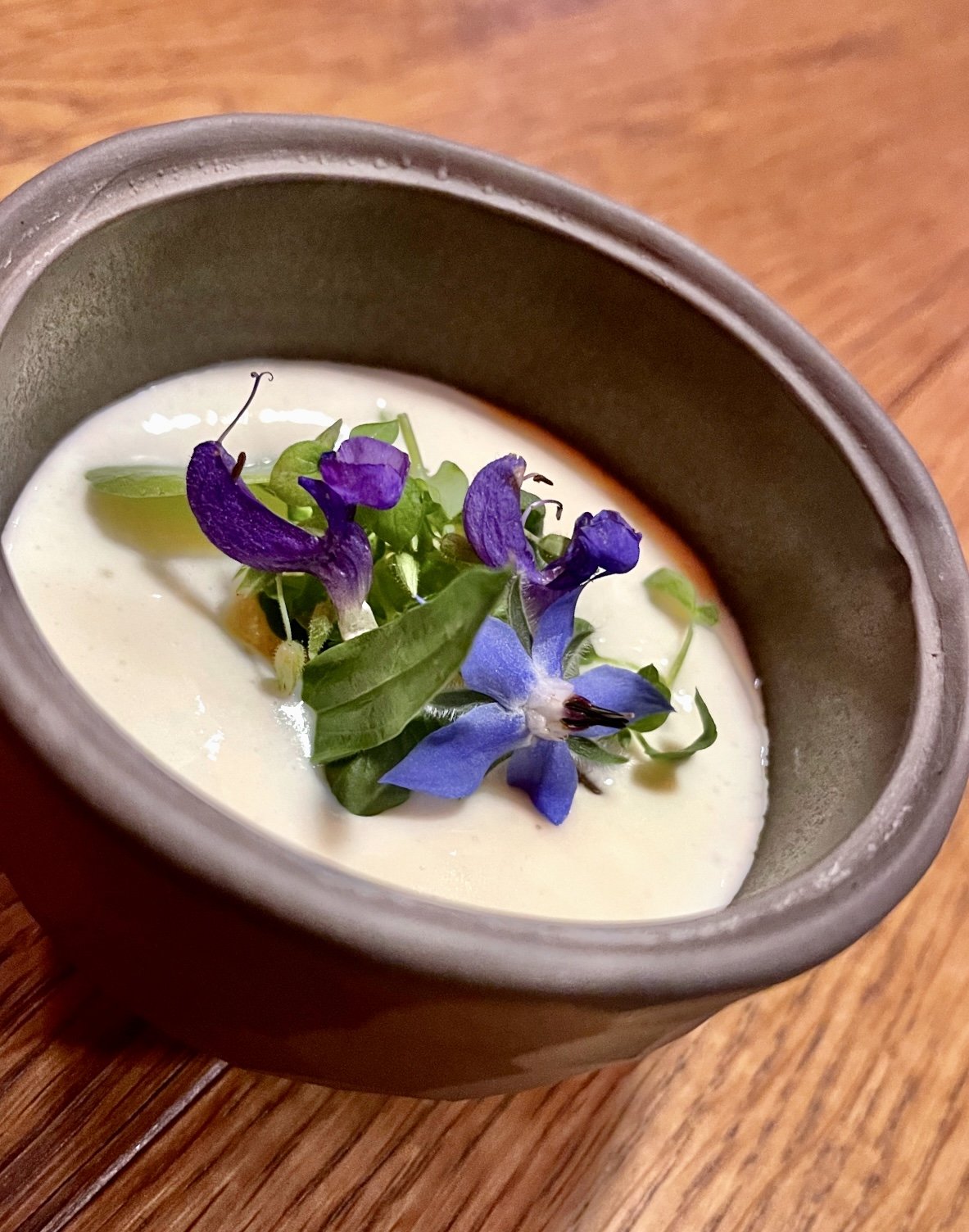Tasting Kombucha on a Fascinating Northern Italian Wine Journey
/Imagine traveling to northeastern Italy's Friuli Venezia Giulia region to a tiny village called Oslavia, just minutes from the Slovenian border. Here, you would spend four days in and around the vineyards of one of Italy’s most revered wine producers, Joško Gravner.
This scenario is every wine writer’s dream come true!
Known as the modern-day father of orange wine, Gravner has been an important figure in conserving Italy’s most ancient winemaking practices. His unique wines, crafted from indigenous grapes Ribolla Gialla and Pignollo, are aged underground for extended periods in clay amphora. Gravner’s “amber” wines, a term he prefers over the word orange, are one-of-a-kind—revered for their depth of flavor, and distinct from many of today’s trendy skin-contact wines.
The wine writer’s dream became a reality for me when I was hosted, along with four other writers, by Gravner’s daughter, Mateja, who runs the winery’s business. Over four days, she led us on a whirlwind tour through her neck of the woods in Italy and Slovenia.
On our last night together, we had dinner at Hiša Franko. This Slovenian three-Michelin-star restaurant has been awarded the 32nd spot on The World’s 50 Best Restaurants (beating out NYC’s famed Le Bernardin, which comes in at 44). Hiša Franko’s food and wine list focuses on items sourced locally, many within a few miles of the restaurant, and the globally-sourced wine list features several Gravner wines. There’s also a fun wine pairing option with three choices: classy, funky, and juicy.
The Bigger Picture
“I thought we would do a kombucha pairing with the 16 courses tonight,” announced Mateja on the morning of the dinner.
Surprised? Yes. Disappointed? Maybe. In truth, I was shocked. What exactly is kombucha, anyway? I think I tried it once and didn’t love it. And weren’t we here to taste Gravner’s amazing wines?
However, I soon discovered the method to her madness, and it all made perfect sense.
Mateja Gravner. All photos by Lisa Denning.
In hindsight, I realize I shouldn’t have been surprised. Mateja had thoughtfully organized our entire itinerary, down to every last detail, starting with a local tour guide who took us on a long walk through Oslavia. The guide introduced us to the area’s unique blend of Austrian, Slovenian, and Italian cultures, and she even shared her pie-baking secrets using the abundant native-grown cherries.
Unlike most press trips, where the wine producers focus mostly on their own endeavors, Mateja went way beyond the Gravner property line, helping us understand the broader cultural influences of the surrounding area.
For example, she drove us to the charming ski resort town of Sappada. A tour was followed by a dinner of inventive cuisine at Laite restaurant where we feasted on classic Friulian dishes like venison with lichens and apricots. Only one dish was paired with Gravner wine, a delicious 2014 Ribolla; the others were a selection of Mateja’s favorite wines from all over Italy.
Tasting vinegar direct from La Subida’s barrels with Josko Sirk.
Mateja introduced us to various local artisans, including the owner of La Subida, a country resort known for crafting barrel-aged vinegars. We also enjoyed an outstanding lunch in the vineyards provided by two local caterers, and attended a class with a knowledgeable sommelier who expertly guided a parallel tasting of Gravner wine with tea.
That night, as we arrived for dinner at Hisa Franko, I was confident that Mateja had something sensational up her sleeve, as she clearly shares her father's philosophy of "another way is possible."
Decades of Growth
Joško Gravner had spent his childhood playing and working in his family’s vineyards. In the early 1970s, at the age of 21, he took over the winery from his father and commenced bottling a style of wine that was different from what had been produced for centuries by his predecessors. This new style—clean and crisp—was becoming popular with consumers worldwide and Gravner jumped on the bandwagon, finding early commercial success.
It was a new winemaking world and the use of modern techniques like fermenting the wines in small oak barrels, followed by aging them in temperature-controlled stainless steel tanks resulted in wines that were nothing like his father’s and grandfather’s. Soon, however, Gravner became dissatisfied, feeling that his wines could have been made anywhere in the world, that they lacked a sense of place. He began questioning his high-tech methods and came to believe that the key to making the best possible wines was to look back to traditional winemaking, specifically the method of macerating the grape juice with the skins, as previous generations in Friuli had always done.
Gravner's reflections also took him to Georgia, often regarded as the 'cradle of wine,' where qvevri (underground oval-shaped clay vessels called amphorae) have been employed for fermenting and storing wine since 6,000 BC. Intrigued by this tradition, Gravner decided to incorporate qvevri into his winemaking process. In 2001, he completed the first vintage, entirely fermenting the wines in amphorae.
Since then, Gravner has spent decades tirelessly redefining his winemaking, always looking for new ways to improve the process.
Kombucha on a Wine Press Trip?
Like her father, Mateja Gravner goes beyond the usual conventions of life. By introducing an unexpected pairing of kombucha and fine cuisine, she invited us to explore the Gravner philosophy of embracing the unknown and seeking alternative paths.
Kombucha, like wine, is a fermented product. But unlike wine, which is made from grapes, kombucha is based on tea. Just as there are passionate winemakers who devote time and effort to creating wines they can be proud of, there are kombucha producers who share the same dedication. At Hiša Franko, the various types of kombuchas are made in-house with the use of local herbs, like mint, and other natural flavorings, such as dried fig leaves, coffee, and caraway seeds.
During the course of the evening, staff members explained how the specific Kombuchas had been made and why they were being served with each dish. Like wine, kombucha’s complex flavors accentuated the dishes, transforming the meal into a unique culinary experience. Kombucha, in this setting, was not just a beverage to quench your thirst; it was an important part of a carefully curated pairing.
As the evening progressed, Mateja’s intent became very clear. By choosing fermented tea-based beverages over wine for a special dinner, she reminded us that progress often lies in venturing beyond the familiar and embracing the unexpected. Her choice reflected the Gravner family’s approach to their craft, their environment, and their lives, always believing that "another way is possible.”
From Tasting to Crafting
I was pleasantly surprised by how much I enjoyed every sip of kombucha with the tasty, beautifully presented cuisine. The evening inspired me, upon returning home, to create my own ginger and raspberry-ginger kombucha. The process was easy, yet took a couple of weeks and involved purchasing a SCOBY, which stands for “symbiotic culture of bacteria and yeast. The end result was a delicious journey back to the world of the Gravners and Hiša Franko’s dining room in Slovenia.
Note: In step six of the recipe, I added a 1/2 teaspoon of honey, a teaspoon of minced ginger, and 5 raspberries to each individual bottle before sealing them.
Lisa’s kombucha




































